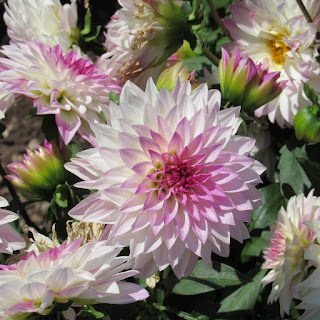We often think about planting bulbs for spring flowers, but there are many summer-flowering bulbs that will bring dramatic color to your summer and early fall garden. Included in this group are Canna Lilies, Asiatic Lilies, Oriental Lilies, Gladiolus, and Dahlias. Except for Asiatic and Oriental lilies, summer-flowering bulbs are not hardy bulbs, meaning they require special attention at the end of the blooming season. That said, the extra effort is worth it, given the colorful displays these bulbs bring to the garden. What we're generically calling "bulbs", also includes tubers, corms and rhizomes.
Before planting, amend your soil with compost and then dig in some Bone Meal to feed your bulbs as they grow.
Grown from bulbs, Asiatic and Oriental lilies are the hardiest of all the lily hybrids. If you planted some last year, you may see them poking through the ground already. Once they are established in your garden, they'll produce showy blooms for many years. Asiatic lilies multiply and spread through the garden very quickly. Oriental lilies won't spread out as rapidly as Asiatic lilies, but they tend to be more fragrant. Asiatic and Oriental Lilies should be planted three times as deep as the height of the bulb, with the flat side down.
Canna lilies feature attractive green, bronze or variegated foliage, in addition to their flowers. Cannas do well in garden beds and containers. The canna “bulb” is a rhizome. Plant cannas about 6" deep and about 18" apart.
Dahlias are grown from tubers and come in a wide variety of colors. Plant dahlias only as deep as the crown and include a strong stake to tie your dahlia stalks to. Dahlias will bring color to your garden from late summer to the first frost.
For more late summer and fall color, plant gladiolus. Available in an array of colors, gladiolus “bulbs” are called corms. Plant your corms about 3" deep and 4" to 5" apart.
Cannas, dahlias, and gladiolus will not survive our winters. If you want to keep them year to year, they must be dug up and stored. Your other option is to treat them as annuals and replace them every year. That said, these flowering bulbs will light up your garden from early summer to the first frost.






No comments:
Post a Comment